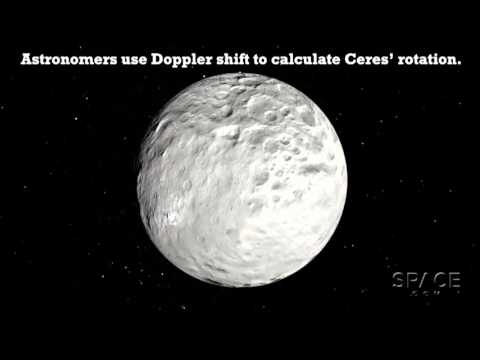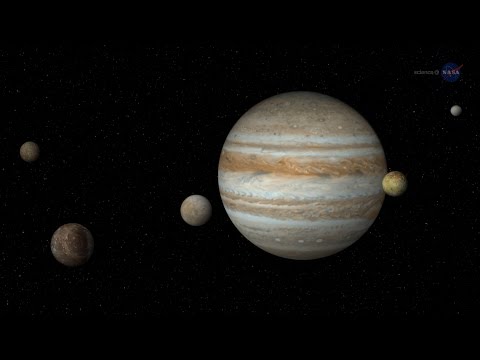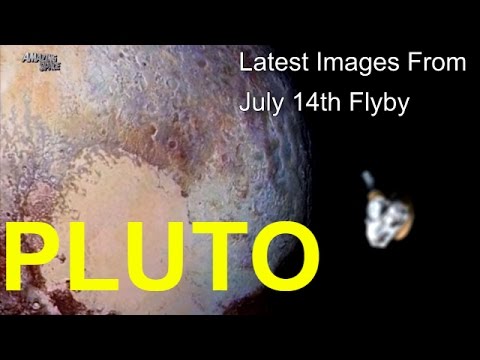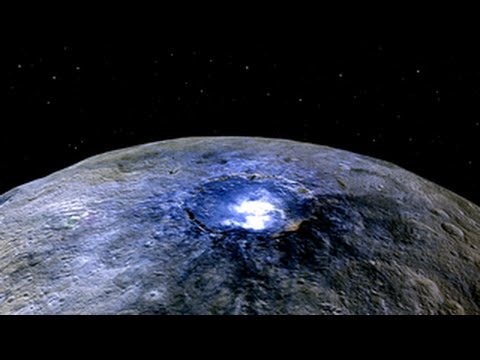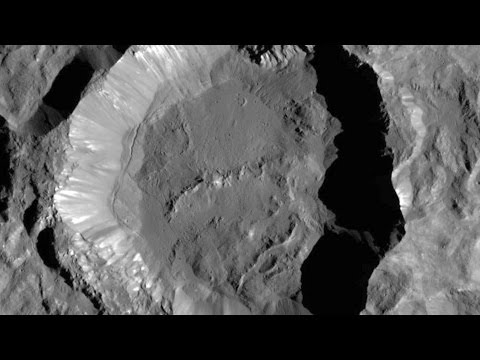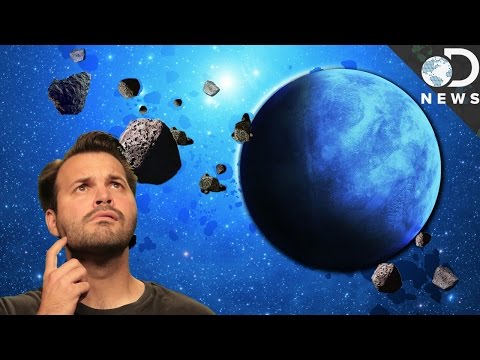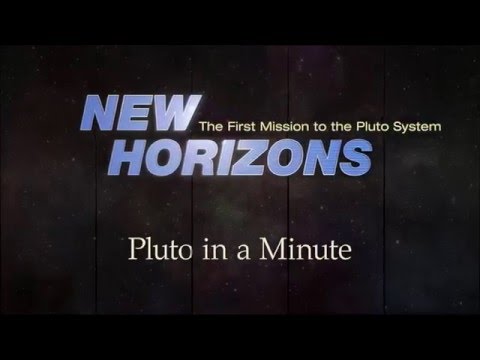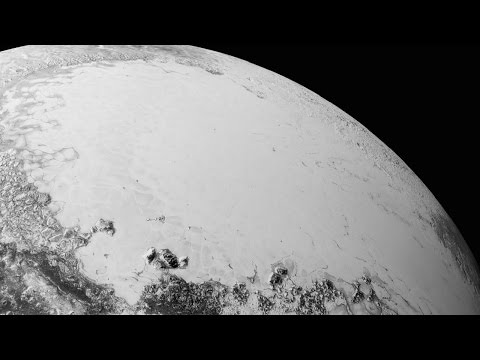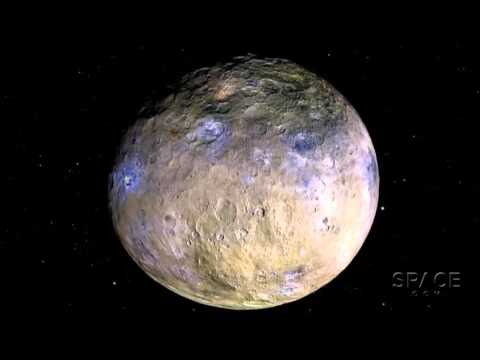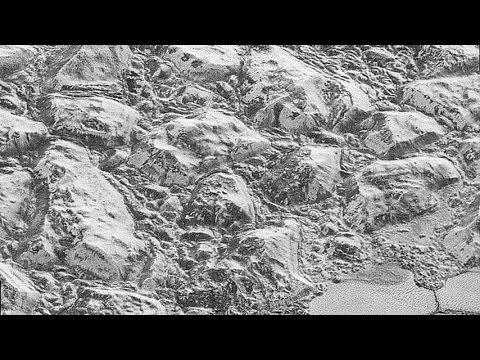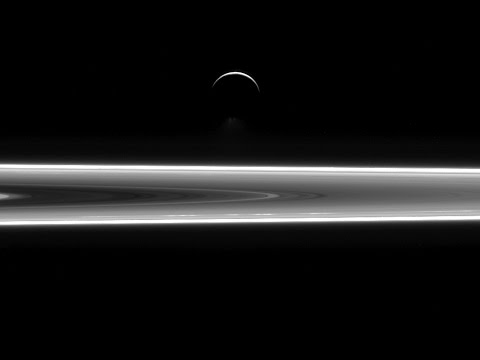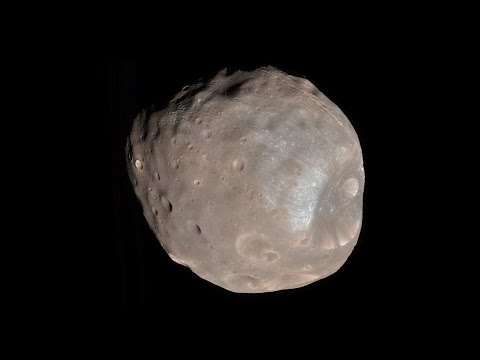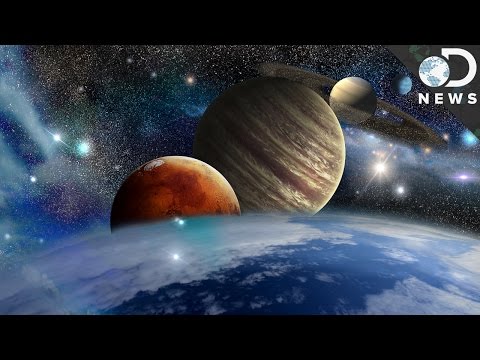Category: The Solar System
By using the HARPS spectrograph at the European Southern Observatory in Chile, scientists have noticed unexpected changes on the famous bright spots on Ceres. Namely, they have found the very bright spots in Ceres’...
The following video explores the most interesting moons in our Solar System, such as Saturn’s moons – Enceladus and Titan – and Jupiter’s moons – Europa, Ganymede and Calisto. During the years, scientists have...
This video shows infrared Pluto’s map of water ice that is taken by NASA’s New Horizons spacecraft. This new map displays areas of water ice with greater precision. Despite that, it still does not...
NASA’s Dawn spacecraft made many images of Ceres from August to October 2015. This video uses these images and makes a simulated view of dwarf planet Ceres. We can enjoy in flying over the...
Two scientists from the California Institute of Technology did a research and published its results in the Astronomical Journal on a potential ninth planet that lies on the fringe of our Solar System. Namely,...
NASA’s New Horizons spacecraft is still sending data of Pluto’s extraordinary surface. In the following video, we can see the most interesting images of Pluto’s such as its ice volcanoes, its mysterious icy plain,...
NASA’s Dawn spacecraft captured the high-resolution images of Ceres and its craters that show new bright spots. Scientists found bright material on the rim and walls of the Ceres’ youngest crater – Cupalo crater....
NASA’s Dawn spacecraft captured new images of dwarf planet Ceres that reveal its craters in greater detail. The images were taken between December 19 and 23 last year from a distance of 240 miles....
NASA’s Lorri or Long-Range Reconnaissance Imaging instrument sent back data of Pluto’s surface that reveal a mysterious snail-like object. The object seems to be slithering through gray, icy surface of Sputnik Planum toward the...
In the following video, Trace Dominguez from DNews explores the area between Mars and Jupiter, also known as the Asteroid Belt. He tries to find answers to the following questions: Did Asteroid Belt contain...
By using data from the NASA’s New Horizons Spacecraft, a team of scientists hypothesizes that the towering mountains on Pluto might be cryovolcanoes. Namely, two Pluto’s mountains – Wright Mons and Piccard Mons that...
By using data from the New Horizons spacecraft, scientists have discovered glacial activity on Pluto in the form of ‘hanging valleys’. The new images have revealed the great variety of Pluto’s landscape, especially in...
Scientists finally found the answer about Ceres’ bright spots that puzzled them long ago. Namely, NASA’s Dawn spacecraft has spotted the white, bright spots on Ceres in March this year. Since then there have...
During Pluto’s flyby, NASA’s New Horizons spacecraft has captured amazing images of Pluto’s Al-Idrisi mountains and Sputnik Planum’s plane. The images were taken from a distance of 10,000 miles (16,000 kilometers) and released on...
NASA’s Cassini spacecraft has captured Enceladus, Saturn’s most intriguing moon in its crescent phase on July 29th, 2015. The moon represents the most inspiring aspect for astrobiologists because of its subsurface ocean. This beautiful...
Scientists found out that Mars’ largest moon Phobos is year after year nearing its end. They have discovered that Phobos grooves might be formed as a result of the increased gravitational pull from Mars.
By using Subaru Telescope, scientists from the American Astronomical Society’s Division for Planetary Sciences have detected a new dwarf planet called V774104. The planet is 15.4 billion kilometers away from our Sun and three...
In the following video, Trace Dominguez and Amy Shira Teitel from DNews, try to answer one of the most debated questions – “Why do the planets in our Solar System follow the order we...

